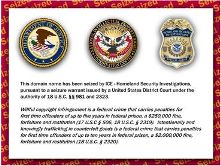Following AT&T’s announcement last month of its planned acquisition of T-Mobile USA, pundits and other oddsmakers have settled in for a long tour of duty. Speculation, much of it uninformed, is already clogging the media about the chances the $39 billion deal—larger even than last year’s merger of Comcast and NBC Universal—will be approved.
Both the size of the deal and previous consolidation in the communications industry lead some analysts and advocates to doubt the transaction will or ought to survive the regulatory process.
Though the complex review process could take a year or perhaps even longer, I’m confident that the deal will go through—as it should. To see why, one need only look to previous merger reviews by the Department of Justice and the Federal Communications Commission, both of which must approve the AT&T deal.
Critics of the deal argue principally that a reduction from four national wireless carriers to three will create grave risks to competition. But Justice and the FCC have consistently rejected such simple-minded analysis. Instead, as consent decrees for several wireless mergers over the last decade–under Democratic and Republican administrations—make clear, both agencies approach the unique economic features of mobile communications with more subtle tools.
For example, both Justice and the FCC have consistently concluded that wireless markets are essentially local. Their competitive analysis—the key in reviewing horizontal mergers of this type—therefore focuses on the choices available to consumers where they buy wireless service; typically where they live, work or shop.
In today’s dynamic mobile industry, some national wireless carriers are strong in some cities or rural areas and weak or absent from others. Beyond the national carriers, lower-priced providers including MetroPCS and Cricket, as well as established regional companies including US Cellular, are strong in local markets. The Justice-FCC market analysis will consider market structure at the local level, counting all providers who are genuinely competitive.
The discussion so far about market concentration levels—measured by the Herfindahl-Hirschman Index, or HHI—ignores the more detailed analysis that the DOJ and the FCC have performed for past mergers including Sprint-Clearwire and Verizon-Alltel (both in 2008).
HHIs are commonly used as starting screens to identify markets where anti-competitive effects might result. But the two agencies have historically concluded that anti-competitive effects will occur only where concentration is especially high–at levels of the HHI well above the published estimates for the AT&T-T-Mobile deal in most markets. In particular, the focus has historically been on local markets where the merger would result in too few remaining competitors. In those markets, local divestitures have been required.
On that analysis, AT&T probably will be required to divest some consumers in some local markets, but fewer than would result from strict application of the high-level HHI screens.
The FCC must also consider potential benefits of the deal that improve the ‘‘public interest.” Here, the agency will take into account serious capacity constraints both AT&T and T-Mobile are already experiencing on their networks. AT&T argues the merger will allow it to optimize scarce spectrum, improve network performance and quality, and accelerate deployment of nationwide mobile broadband using LTE technology, including expansion into rural areas.
The FCC and DOJ will require evidence to support these claims, of course. But assuming AT&T can back them up, they constitute strong public interest benefits. After all, these are all goals the FCC itself established as part of last year’s National Broadband Plan. Likewise, as part of its evaluation, the DOJ will consider these and other claimed synergies as pro-competitive efficiencies produced by the merger.
Finally, that the deal is being vigorously opposed by some competitors—notably Sprint—actually helps AT&T’s case. Antitrust enforcers are understandably skeptical of claims by competitors that a merger will hurt them. Why? If a merger leads to higher prices for consumers, competitors such as Sprint would actually benefit. So when a competitor complains a merger is anticompetitive, the agencies take that as evidence the deal will in fact produce a stronger rival. And a stronger rival is good for consumers.
In the end, Justice and the FCC will have to weigh the competitive risks of further consolidation against the benefits for American consumers of improved service and accelerated deployment of nationwide mobile broadband. If history is any guide, the merger will ultimately be approved with specific conditions, including divestitures, to ensure that local competition is preserved even as national benefits are achieved.
That, of course, assumes the agencies follow their own best practices and not naysayers who can only count down from four to three. Let’s hope they do.
Reproduced with permission from Daily Report for Executives, 69 DER B-1 (Apr. 11, 2011). Copyright 2011 by The Bureau of National Affairs, Inc. (800-372-1033)




